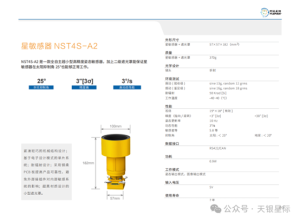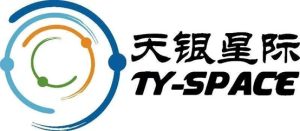“At 19:06 on October 15th, 2024, SpaceSail Polar Orbit 02 satellites were successfully launched at the Taiyuan Satellite Launch Center using the Long March 6 rocket with 18 satellites in one launch. The 36 satellites of SpaceSail Constellation that are already in orbit all use the TY-space PST4S-H1 Star Trackers.”
![]()
On October 22, the Long March 6 rocket successfully launched the Tianping-3 A (01), B (01、 02) satellites into the predetermined orbit at the Taiyuan Satellite Launch Center, and the launch mission was a complete success.
![]()
TY-space star trackers work successfully for Yaogan-43 group satellites by the Long March 2C rocket, and orbit on Oct 23rd, 2024 .
![]()
On November 11, the Lijian-1 Yao-5 rocket was launched at the Dongfeng Commercial Space Innovation Experimental Area, using the method of 15 satellites in one rocket to successfully send 15 satellites including the OL-1 Satellite into the predetermined orbit.
![]()
Tianping-3 satellites, Yaogan-43 group satellites and the OL-1 Satellite used multiple NST4S-A2 star trackers, PST4S-H1 star trackers, and PST3S-H5 star trackers of TY-space technology respectively.
01
NST4S-A2 Star Tracker
NST4S-A2 star tracker is a high-precision attitude tracker independently developed, designed and produced by TY-space technology. The product weight is 370g (including baffle), the size is 57*57*182 (mm³), the power consumption is as low as 0.9W, and it can work under a 25-degree solar suppression angle; NST4S-A2 adopts a compact and lightweight mechanical structure design, a single-chip system based on an electronic design pattern, and is radiation-resistant; the use of steel-flexible PCB boards avoids the influence of external connectors on the internal sensitive system and improves product reliability; the baffle is designed with ultra-black material. The design service life can reach 7 years.

PST4S-H1 star sensor introduction
PST3S-H5 star sensor introduction
02
SpaceSail Constellation
The SpaceSail constellation introduced before, also called G60 Starlink plan, is one of the two low-orbit satellite Internet constellation plans under construction in China. Benchmarking against Musk’s Starlink, SpaceSail Constellation plans to launch 15,000 satellites by the end of 2030 to form a global space network and provide multi-business integration services such as mobile phone direct connection. By then, no matter where you are in the mountains, deserts,upper air or in the ocean, as long as you have a mobile phone, you can go online at any time without worrying about being “disconnected” from the world.
(Schematic diagram of low-orbit satellite coverage)
The number of satellites required is so large, on the one hand,because the operating speed of low-orbit satellites is relatively high compared to the ground operating speed, and a large number of satellites are needed to form a constellation for continuous coverage.
On the other hand, at present, the global competition for space orbit resources and radio frequency resources for low-orbit satellites is very fierce, which can be understood as first come first served. Specifically, after applying for frequency and orbital position, the first satellite must be launched within 7 years, the total number of launches must reach 10% within 9 years, the total number of launches must reach 50% within 12 years, and the entire constellation must be launched within 14 years. It can be said that time is tight and the task is heavy.
(As of August 2024, the situation of “Starlink” satellites in orbit)
Such a huge demand caused by the establishment of constellation networks can be met only when satellites are mass-produced. To achieve mass production, satellites must be put into motion and enter the assembly line production mode, making satellites like cars. At present, China has deployed multiple smart satellite factories and realized the satellite assembly line production mode. The annual output of a single factory can reach 300 to 500 satellites.
(Assembly line production of satellite factories)

TY-space is achieving mass production of star trackers. Board Levering, electronic testing, thermal cycling, Thermal Vacuum, and Real Sky Tests etc. have all been automated and completed in batches. All test reports are automatically output, with remote monitoring processes. The annual production can reach 2000 sets, which can meet the satellite factory’s mass production requirements for high performance, high reliability, high output and high delivery speed of star sensor products!
Thousands of sails are competing, and only those who paddle hard can succeed!

